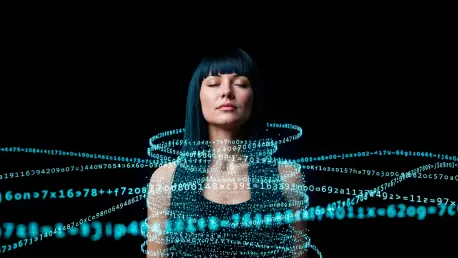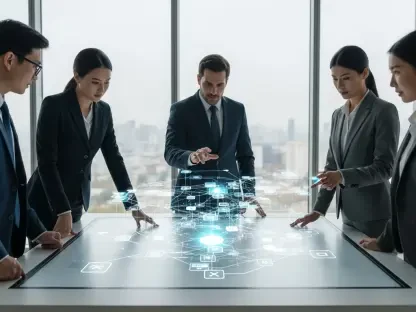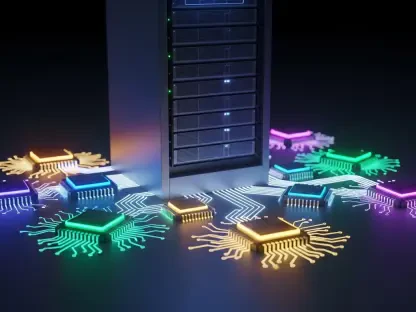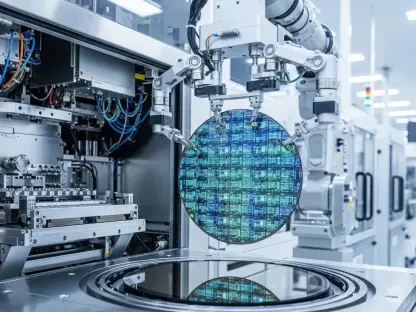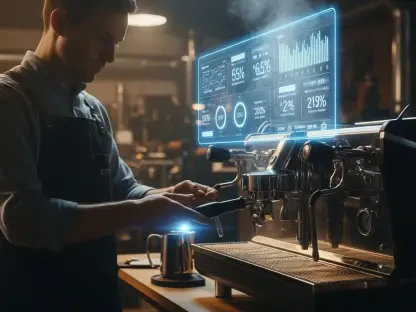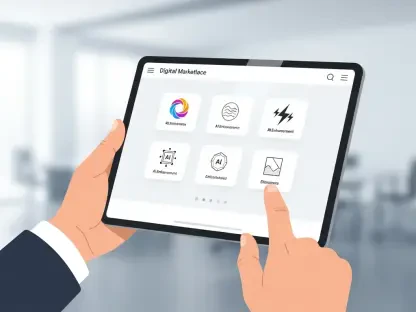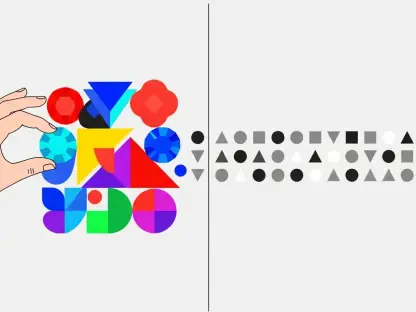In the rapidly evolving landscape of artificial intelligence, a surprising revelation has emerged about the creative potential hidden within technical imperfections, offering a new perspective on machine learning. Diffusion models, the powerhouse behind popular image generation tools like DALL·E, Imagen, and Stable Diffusion, have captivated researchers and technologists alike with their ability to produce not just replicas of training data but strikingly original visual content. Originally designed to mimic existing images through a process of denoising digital noise, these models have demonstrated an unexpected knack for innovation, blending elements from disparate sources into novel creations. This phenomenon raises intriguing questions about the nature of creativity in machines and challenges the traditional view of AI as a purely replicative technology. Far from being a hindrance, the flaws within these systems appear to be a catalyst for originality, offering a fresh lens through which to explore the intersection of technology and artistry in the digital age.
Unveiling the Paradox of AI Creativity
The foundation of diffusion models lies in their ability to deconstruct images into noise and then reconstruct them through iterative refinement, a process that should, in theory, prioritize memorization over invention. Yet, a fascinating paradox arises as these models consistently generate content that transcends mere imitation. Experts like Giulio Biroli from École Normale Supérieure in Paris have pointed out that perfect memorization should logically prevent novelty, yet the output of these systems often surprises with its uniqueness. This creative leap stems from the inherent imperfections in the denoising mechanism, which introduces subtle variations during reconstruction. Rather than strictly adhering to the original data, the model blends and reinterprets elements, crafting visuals that feel both familiar and entirely new. This unexpected behavior suggests that creativity in AI might not be a programmed feature but an emergent property born from the very limitations of the technology itself, reshaping how machine learning is understood.
Delving deeper into this paradox, it becomes clear that the denoising process acts as a digital sandbox for experimentation. As the model iteratively rebuilds an image from noise, it navigates a complex landscape of possibilities, often diverging from the expected path due to algorithmic quirks. These deviations, while technically flaws, enable the system to explore uncharted combinations of visual elements, resulting in outputs that can rival human imagination. The significance of this lies not just in the aesthetic value of the generated content but in the broader implications for AI development. By embracing imperfection, developers may unlock new pathways for innovation, moving beyond rigid replication to foster systems capable of genuine originality. This perspective challenges the conventional wisdom that precision and perfection are the ultimate goals in machine learning, highlighting instead the creative potential embedded in the unexpected.
Research Insights on Imperfections as Innovation Drivers
Recent studies presented at major machine learning conferences have provided compelling evidence that creativity in diffusion models is not a random occurrence but a deterministic outcome of their design flaws. A groundbreaking analysis by two physicists revealed that the imperfections in the denoising algorithms are not obstacles but essential components that fuel originality. Their research offers a mathematical framework to explain how these technical hiccups lead to structured, meaningful innovation rather than chaotic errors. Far from diminishing the models’ effectiveness, these flaws allow for a dynamic interplay of data points, enabling the AI to produce outputs that are both surprising and coherent. This discovery reframes the conversation around AI development, suggesting that striving for flawless systems might actually stifle the very creativity that makes these tools so remarkable in the first place.
Building on this research, the findings also indicate that imperfections provide a form of flexibility that rigid systems lack. When a diffusion model encounters an anomaly during the denoising process, it adapts by integrating disparate elements from its training data in novel ways, often resulting in visually striking compositions. This adaptability mirrors the trial-and-error approach seen in human creative endeavors, where mistakes often lead to breakthroughs. The study’s implications extend beyond image generation, offering a blueprint for designing AI systems across various domains that can leverage flaws as a source of innovation. By understanding the specific mechanisms through which these imperfections operate, developers can potentially engineer environments where creativity is not just a byproduct but a deliberate outcome, pushing the boundaries of what machines are capable of achieving in artistic and practical applications.
Drawing Parallels with Biological Creativity
An intriguing angle of this research lies in the comparison between AI creativity and biological processes, offering a unique perspective on how machines and nature intersect. Lead author Mason Kamb from Stanford University likens the behavior of diffusion models to morphogenesis, the process by which organisms develop shape through decentralized interactions. Just as cells self-organize into complex patterns without a central directive, diffusion models dynamically respond to input data and algorithmic imperfections to create novel outputs. This analogy draws on Alan Turing’s theory of patterns, which describes how local interactions can lead to global organization, and applies it to the digital realm. Such parallels suggest that the principles underlying creativity might be universal, transcending the boundaries between organic life and synthetic systems, and opening new avenues for interdisciplinary exploration.
Further exploration of this concept reveals that, much like biological systems, diffusion models can produce unexpected anomalies alongside their innovative outputs. These quirks, while sometimes unconventional, reflect the same kind of variability that drives evolution and adaptation in nature. For instance, just as a genetic mutation might lead to a novel trait in an organism, a glitch in the AI’s process can result in a visually arresting image that defies expectation. This comparison, as highlighted by researchers, underscores the potential for AI to not only mimic human creativity but also to illuminate the mechanisms behind it. By studying how decentralized processes and imperfections contribute to innovation in machines, there is an opportunity to gain deeper insights into the creative processes of living beings, fostering a dialogue between technology and biology that could redefine both fields in profound ways.
Future Horizons for AI and Creativity
Reflecting on the journey of diffusion models, it has become evident over time that their creative outputs are not mere accidents but the result of intricate structural dynamics. The research conducted by experts in the field has demonstrated with clarity that imperfections in denoising algorithms are pivotal in enabling these systems to transcend replication. This understanding marked a turning point, as it shifted the focus from eliminating flaws to harnessing them as drivers of innovation. The collaborative insights from physicists and computer scientists alike painted a comprehensive picture of how machine creativity mirrors biological processes, offering a unified view of adaptability and originality across domains. These findings have laid a robust foundation for rethinking AI design in a historical context, emphasizing the value of imperfection as a catalyst for progress.
Looking ahead, the implications of this research invite actionable steps for the future of AI development. Developers and researchers are encouraged to explore ways to intentionally integrate controlled imperfections into algorithms, creating environments where creativity can flourish systematically. Additionally, fostering interdisciplinary collaboration between AI specialists and biologists could yield novel frameworks for understanding creativity as a universal phenomenon. The potential to draw parallels between machine and human innovation offers a promising direction for optimizing systems that are not only functional but also artistically expressive. As the field moves forward, embracing the unexpected may well become a cornerstone of technological advancement, ensuring that AI continues to surprise and inspire with its capacity for originality.
